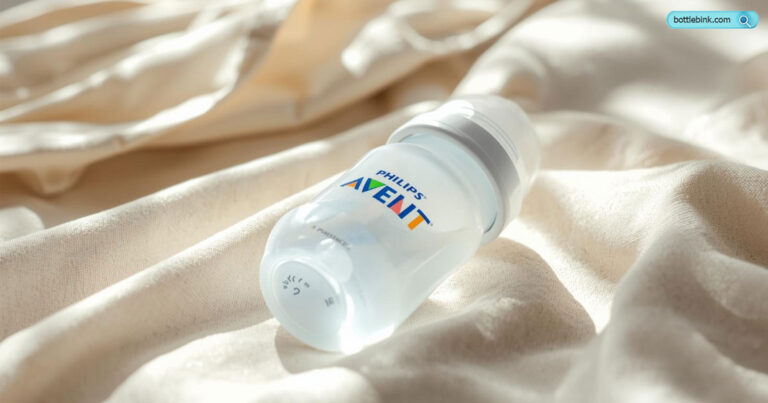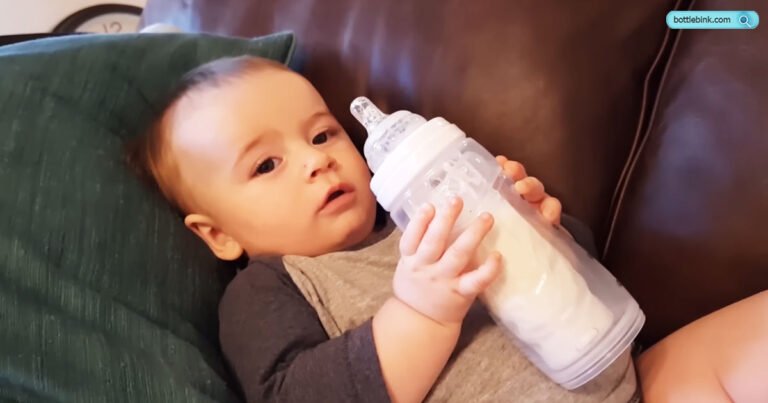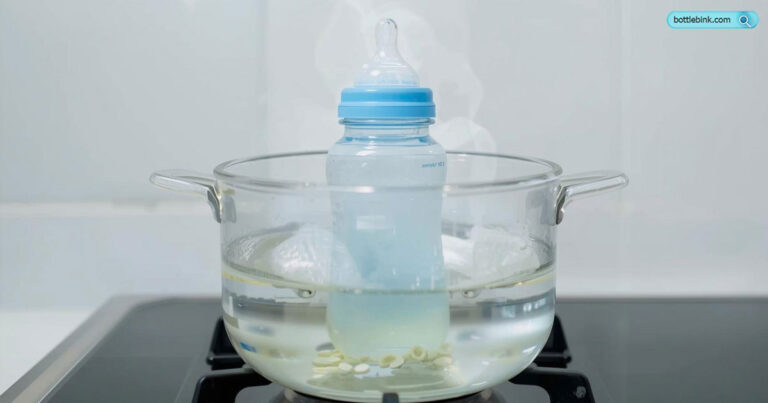How to Sterilize Plastic Baby Bottles? Easy & Safe Methods Revealed
If you’re a parent or caregiver, you know how important it is to keep your baby’s bottles clean and safe. But do you really know how to sterilize plastic baby bottles the right way?
Using the wrong method could leave harmful germs behind or damage the bottles. In this guide, you’ll discover simple, effective steps to sterilize your baby’s bottles quickly and safely. Keep reading to protect your little one’s health and give yourself peace of mind every time you feed.
Why Sterilize Baby Bottles?

Sterilizing baby bottles is crucial for your baby’s health. Babies have weak immune systems. Germs in bottles can cause infections and stomach problems. Cleaning alone does not kill all germs. Sterilization removes harmful bacteria and viruses. It helps keep feeding safe and healthy.
Risks Of Unsterilized Bottles
Unsterilized bottles carry many risks. Harmful bacteria can grow on bottle surfaces. These germs can lead to diarrhea and vomiting. Babies may get sick often. Some infections can cause serious health issues. Using unsterilized bottles increases chances of illness. It can also cause fussiness and poor feeding.
Benefits Of Sterilization
Sterilizing bottles protects your baby from germs. It kills bacteria, viruses, and fungi. Sterilization ensures bottles are safe for feeding. It reduces the risk of infections and sickness. Clean bottles help babies digest food better. Sterilizing also gives parents peace of mind. It supports your baby’s healthy growth and development.

Types Of Plastic Baby Bottles
Plastic baby bottles come in different types. Choosing the right one helps in easy cleaning and safe feeding. Each type has unique features and materials that affect how you sterilize them. Understanding the common materials and safety factors is important.
Common Materials Used
Most plastic baby bottles are made from polypropylene (PP), polyethylene (PE), or polycarbonate (PC). Polypropylene is lightweight and heat resistant. Polyethylene is softer and flexible but less heat resistant. Polycarbonate bottles are strong and clear but may contain BPA, a chemical to avoid. Many bottles now use BPA-free plastics for safety.
Safety Considerations
Check if the bottle is BPA-free. BPA can harm babies’ health. Look for labels that say “BPA-free” or “food grade.” Avoid bottles that crack or discolor with heat. Cracks can hide bacteria and make sterilizing less effective. Always follow manufacturer instructions for sterilizing each type of plastic bottle.
Preparation Before Sterilizing
Preparing baby bottles before sterilizing is very important. This step ensures the bottles are clean and safe for your baby. Proper preparation helps remove milk residue and dirt. It also makes sterilizing more effective. Follow these simple steps to get the bottles ready.
Cleaning Bottles Thoroughly
Start by washing the bottles with warm, soapy water. Use a bottle brush to reach all corners inside. Clean the nipples and caps carefully. Rinse everything well to remove soap. This step removes leftover milk and dirt. It prevents bacteria from growing on the bottles.
Checking For Damage
Look closely at the bottles for cracks or scratches. Check the nipples for any holes or tears. Damaged bottles or nipples can be unsafe for your baby. Replace any parts that show wear or damage. Using intact bottles ensures better sterilization and safety.
Boiling Method
The boiling method is a simple way to sterilize plastic baby bottles. It uses heat and water to kill germs and bacteria. This method does not require special tools or chemicals. It is a popular choice for many parents because it is easy and effective.
Boiling helps remove harmful germs that can make babies sick. It works well for most plastic bottles, but always check the bottle’s instructions. Some plastics may not handle high heat well. This method is quick and can be done in most kitchens.
Step-by-step Guide
- Fill a large pot with enough water to cover all bottle parts.
- Place the pot on the stove and bring the water to a rolling boil.
- Carefully put the plastic bottles, nipples, and caps into the boiling water.
- Let all items boil for at least 5 minutes to kill germs.
- Use tongs to remove the bottles and parts from the water.
- Place them on a clean towel or drying rack to air dry.
- Make sure everything is completely dry before use or storage.
Pros And Cons
- Pros:No chemicals needed, easy to do, effective at killing germs.
- Cons:Some plastics may warp or melt, takes time to boil and cool.
- Boiling can be unsafe if not careful with hot water.
- Not suitable for bottles with electronic parts or special coatings.
Steam Sterilization
Steam sterilization is a safe and effective way to clean plastic baby bottles. It kills germs using hot steam without chemicals. This method keeps bottles clean and ready for use. Steam sterilization is quick and easy for busy parents.
Using Electric Steam Sterilizers
Electric steam sterilizers use electricity to create steam inside a closed chamber. Place the washed bottles and parts inside the machine. Turn it on and wait for about 6 to 10 minutes. The steam kills bacteria and viruses on all surfaces.
These devices can sterilize multiple bottles at once. They are easy to use and save time. The bottles remain sterile for several hours if the lid stays closed.
Microwave Steam Bags
Microwave steam bags are a portable option for sterilizing bottles. Put the bottle parts inside the bag with some water. Place the bag in the microwave and heat it for 2 to 6 minutes.
The steam inside the bag cleans the bottles quickly. These bags are lightweight and good for travel. They are also disposable, making cleanup simple.
Chemical Sterilization
Chemical sterilization offers a simple way to clean plastic baby bottles. It kills germs without heat, making it ideal for delicate bottles. This method uses safe chemicals that dissolve in water. Baby bottles soak in this solution to get sterile. It works well at room temperature. Chemical sterilization fits busy parents who want quick, effective cleaning.
Sterilizing Solutions And Tablets
Sterilizing solutions come as liquids or tablets. Tablets dissolve quickly in warm water. They create a germ-killing liquid safe for baby bottles. Soak the bottles and parts fully in the solution. Follow the instructions on the package for timing. Usually, 15 to 30 minutes is enough. After soaking, rinse bottles with cooled boiled water. This removes any leftover chemical taste or smell.
Safety Tips
Use only sterilizing products made for baby bottles. Check the expiration date before use. Never mix different chemical products. Keep solutions out of children’s reach. Rinse bottles well after soaking to avoid irritation. Use clean hands and tools when handling sterilized bottles. Store sterilized bottles in a clean, dry place. Regularly inspect bottles for cracks or damage. Replace bottles if damaged to keep your baby safe.
Choosing The Best Method
Choosing the best method to sterilize plastic baby bottles is important for your baby’s safety. Different methods work better for different situations. Knowing how each method affects the bottle helps you pick the safest option.
Factors To Consider
Think about the time you have. Some methods take minutes, others longer. Also, check the tools you already have at home. Some methods need special equipment. Safety is key. Make sure the method kills germs without harming the bottle. Ease of use matters too. The best method should be simple and quick.
Suitability For Different Plastics
Not all plastics handle heat or chemicals the same way. Some bottles can melt or warp with high heat. Others might crack or lose shape. Read the bottle label to see what it can handle. Some plastics do well with boiling water. Others do better with cold sterilizing solutions. Choose a method that fits your bottle’s material to keep it safe and strong.
Storing Sterilized Bottles
Storing sterilized baby bottles properly keeps them safe and clean for feeding. Proper storage stops germs from growing. It also saves time before the next use. Clean hands and clean storage areas matter a lot. Use clean containers or bags to hold bottles. Keep bottles covered to avoid dust and dirt.
Maintaining Sterility
Always wash hands before handling sterilized bottles. Use clean, dry gloves if needed. Store bottles in a sealed container or plastic bag. Avoid opening the container often to keep germs out. Place bottles in a cool, dry spot away from sunlight. Do not touch the inside of bottles or nipples. Keep the storage area free from dust and pets.
Storage Duration
Sterilized bottles stay safe for about 24 hours. Use them within this time to avoid bacteria growth. If bottles are opened or touched, use them right away. Do not store sterilized bottles longer than one day. If unsure, sterilize bottles again before use. Fresh sterilization is best for baby’s health and safety.
Common Mistakes To Avoid
Sterilizing plastic baby bottles is important for your baby’s health. Mistakes during the process can cause damage or leave germs behind. Avoiding common errors helps keep bottles safe and clean.
Overheating Plastic Bottles
Plastic bottles can melt or warp if exposed to high heat. This damages the bottle and may release harmful chemicals. Use the correct temperature and time for sterilizing. Never put bottles directly on heat sources. Follow safe heating methods like boiling water or steam sterilizers.
Ignoring Manufacturer Guidelines
Every bottle brand has specific care instructions. These include cleaning and sterilizing tips. Ignoring these can shorten bottle life or reduce safety. Read and follow the guidelines carefully. Use only recommended sterilizing methods to protect your bottles and baby.
FAQs About How to Sterilize Plastic Baby Bottles
How Often Should Plastic Baby Bottles Be Sterilized?
Sterilize bottles before first use and daily if your baby is under 3 months or sick.
What Is The Safest Way To Sterilize Plastic Baby Bottles?
Boiling, steam sterilizers, or microwave sterilizers are safe and effective methods.
Can I Use Boiling Water To Sterilize Plastic Baby Bottles?
Yes, boiling for 5 minutes kills most germs without damaging the plastic.
Are Microwave Sterilizers Safe For Plastic Baby Bottles?
Microwave sterilizers safely kill bacteria using steam without harmful chemicals.
How Long Does It Take To Sterilize Plastic Baby Bottles?
Sterilizing usually takes 5 to 10 minutes depending on the method used.
Is It Safe To Use Chemical Sterilizing Solutions On Plastic Bottles?
Yes, but rinse bottles well to remove all chemical residues before use.
Can I Reuse Sterilized Plastic Baby Bottles Immediately?
Yes, use sterilized bottles right away or keep them sealed to stay clean.
Why Is Sterilizing Plastic Baby Bottles Important For Babies?
Sterilizing kills harmful germs that can cause infections in babies.
Conclusion
Sterilizing plastic baby bottles keeps your baby safe and healthy. Clean bottles stop germs from growing. Use boiling water, steam, or sterilizer machines to kill bacteria. Always follow instructions carefully for the best results. Let bottles dry fully before use.
Regular sterilizing helps avoid infections and illnesses. Stay consistent to protect your baby’s delicate health. Simple steps make a big difference every day. Keep your baby’s bottles clean and worry-free. Safe feeding means happy, healthy babies.






